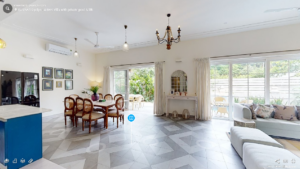2. Offer Value:
Ensure that your limited-time offer provides genuine value to customers. This could be in the form of discounts, bundle deals, free shipping, or even exclusive add-ons.
3. Set a Time Frame:
Decide on the duration of the offer. It should be short enough to create a sense of urgency but long enough for customers to act. Common time frames include 24 hours, a weekend, or a week.
4. Promote Across Channels:
Promote the limited-time offer through various channels such as your website, email marketing, social media, and paid advertisements. Consistent messaging across channels enhances visibility.
5. Use Urgent Language:
Craft compelling and urgent messaging that emphasizes the limited-time nature of the offer. Use phrases like “Act now,” “Limited time only,” or “While supplies last.”
6. Countdown Timers:
Implement countdown timers on your website or in emails to visually remind customers of the time remaining for the offer. This increases the perceived urgency.
7. Exclusive Access:
Consider offering early access to the limited-time offer for your email subscribers or loyalty program members. This makes them feel valued and enhances engagement.
8. Highlight Savings:
Clearly communicate the amount customers will save through the limited-time offer. Compare the discounted price to the regular price to underscore the value.
9. Upselling Opportunities:
Use limited-time offers to promote upselling. For example, offer a higher discount for purchasing a larger furniture set.
Exclusive Collections:
1. Curate a Unique Collection:
Create an exclusive collection of furniture pieces that can’t be found in your regular inventory. These could be special designs, limited-edition pieces, or variations on popular items.
2. Tell a Story:
Develop a compelling narrative around the exclusive collection. Explain why these pieces are special, their design inspiration, and the benefits they offer.
3. Limited Availability:
Keep the collection genuinely exclusive by producing a limited quantity. This scarcity drives demand and adds to the exclusivity factor.
4. Tease and Preview:
Generate anticipation by teasing the upcoming exclusive collection through sneak peeks, behind-the-scenes content, and teasers on social media and your website.
5. Loyalty Program Involvement:
Give your loyal customers early access to the exclusive collection. This rewards their loyalty and fosters a sense of belonging.
6. Influencer Collaboration:
Collaborate with interior design influencers or industry experts to endorse and showcase the exclusive collection. Influencers’ endorsement lends credibility and visibility.
7. Host a Launch Event:
Host a virtual or in-person launch event to unveil the exclusive collection. Offer special promotions or bonuses for attendees to create excitement.
8. Exclusivity Perks:
Offer additional perks with the exclusive collection, such as personalized design consultations, customization options, or priority customer service.
Measuring Success:
Track metrics like website traffic, conversion rates, sales volume, and engagement levels during the limited-time offer or exclusive collection campaign. Analyze customer feedback and gather insights for future campaigns.
Both limited-time offers and exclusive collections can invigorate your furniture marketing efforts, drive sales, and create memorable customer experiences. By strategically implementing these tactics, you can tap into customer psychology, create a sense of urgency, and foster brand loyalty through exclusive and valuable offerings.
Understanding Global furniture leaders leaverges limited-time offers and exclusive collections in Furniture marketing:
Global furniture leaders often employ Limited-Time Offers and Exclusive Collections as strategic marketing tactics to capture consumer attention, drive sales, and maintain their brand’s image of luxury, innovation, and exclusivity. Let’s explore how some of these leaders are utilizing these strategies in their furniture marketing:
IKEA: Limited-Time Offers
IKEA, known for its affordable and stylish furniture, occasionally utilizes limited-time offers to attract customers and increase sales. They often run time-bound promotions, such as “Flash Sales,” where specific furniture items are offered at discounted prices for a limited period. IKEA’s limited-time offers are characterized by:
- Clear Messaging: IKEA emphasizes the urgency of these sales events through its advertising, using phrases like “Limited Time Only” and “Hurry, Sale Ends Soon.”
- Exclusive Discounts: The brand provides exclusive discounts on popular furniture pieces, encouraging customers to take advantage of the opportunity to save.
- Multi-Channel Promotion: IKEA promotes its limited-time offers across various channels, including their website, social media, email newsletters, and physical stores.
- High Demand Items: These offers are often extended to high-demand items or furniture collections, creating a sense of competition among customers.
Herman Miller: Exclusive Collections
Herman Miller, renowned for its modern and iconic designs, leverages the concept of exclusive collections to maintain its reputation for innovation and design excellence. The brand occasionally collaborates with renowned designers to create limited-edition furniture collections. Their approach includes:
- Design Partnerships: Collaborating with established designers allows Herman Miller to introduce unique and high-end furniture collections that resonate with design enthusiasts.
- Narrative and Storytelling: The brand highlights the design philosophy, inspiration, and creative process behind each exclusive collection, creating an emotional connection with customers.
- Limited Quantity: Herman Miller ensures that the exclusive collections are produced in limited quantities, making them sought-after items in the design world.
- Launch Events: The brand often hosts launch events or virtual showcases to unveil these exclusive collections, generating buzz and anticipation.
- High-Quality Craftsmanship: Herman Miller’s commitment to quality craftsmanship aligns with the luxury and exclusivity associated with its exclusive collections.
West Elm: Limited-Time Offers and Collaborations
West Elm, known for its contemporary and on-trend furniture, frequently employs limited-time offers and collaborations with designers to engage its customer base. The brand’s approach includes:
- Seasonal Sales: West Elm offers seasonal limited-time sales, such as “Summer Sale” or “Black Friday Deals,” enticing customers with discounts on various furniture items.
- Designer Collaborations: The brand partners with designers and artists for limited-edition furniture pieces, infusing a sense of exclusivity and creativity into its offerings.
- Timely Themes: West Elm aligns limited-time offers with current trends or events, such as “Outdoor Furniture Sale” during the summer months or “Home Office Essentials” during remote work trends.
- Email Campaigns: West Elm’s email marketing plays a significant role in notifying customers about limited-time offers and exclusive collaborations, creating a sense of urgency and excitement.








